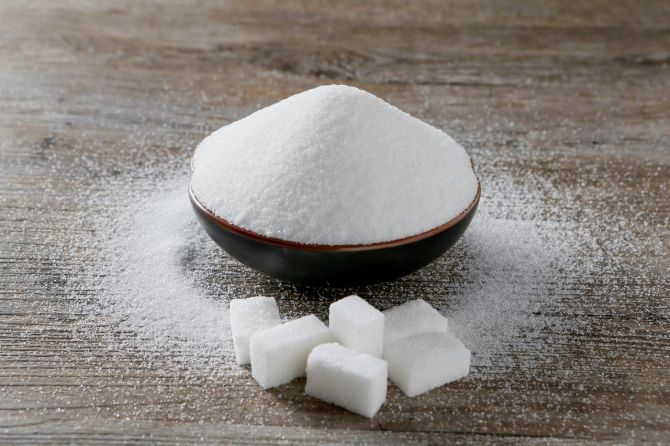Three million tonnes of buffer stock, where the government bears the interest and insurance cost, was announced by the Centre only for a year and that period is ending in June.

With Ram Vilas Paswan taking charge as food, civil supplies and consumer affairs minister for another term, he will have to tackle the same problems in the sugar industry which he attempted to resolve a year ago.
This time, however, he will have to tackle them differently, that is, by being WTO compliant.
After a big package was announced in phases a year ago, the excess sugar availability is still constant.
Even the price at which mills sell the sweetener has been artificially elevated with the government coming up with a minimum sale price below which mills cannot sell.
Three million tonnes (mt) of buffer stock, where the government bears the interest and insurance cost, was announced by the Centre only for a year and that period is ending in June.
The 5 mt exports target given to mills was linked to several concessions and subsidies.
It is estimated to fall short by 20 per cent or one million tonnes when season ends next September.
Now, the Rs 1 trillion domestic sugar industry is pinning hopes on Narendra Modi 2.0 for support as the coming 2019-20 sugar season is expected to have a record carryover stock of more than 14 mt, which is more than 6 months of the country’s consumption.
“In the next season, we expect an opening sugar balance of 14-14.5 mt, which would cater to 6-7 months of domestic consumption, against the ideal opening balance for 2-2 and half months’ consumption,” Indian Sugar Mills’ Association (ISMA) director general Abinash Verma told Business Standard, claiming such high opening stock was unprecedented in India.
He said proactive government support, which was World Trade Organization (WTO) compatible as well as simpler and easier to implement, was required in the next season.
Last season, in the run up to the 2019 Lok Sabha polls, the Centre had announced hordes of incentives to support the sector, including soft loans and export quota, among others.
According to sources, so far 3 mt has been exported of the 5 mt quota.
Since the government had announced mill-wise quota, defaulting mills would be denied production, transport and buffer stock subsidy.
Apart from deciding on extending buffer stock subsidy which will have to be extended for one more year, another issue that requires government attention is the non-fulfilment of exports quota.
It is almost certain that this season is ending with about 33 mt of production but the next season 2019-20 will see a sharp fall of around 10 per cent in production either due to poor yield or diversion of sugarcane for ethanol.
Mounting cane arrears are also hurting sugar companies.
Currently, pan Indian farmer arrears are to the tune of Rs 25,000 crore, of which Uttar Pradesh mills alone account for nearly Rs 10,000 crore or 40 per cent of the outstanding.
Recently, the sugar sector showed recovery in prices to Rs 33,000-Rs 33,500 per tonne (ex-mill Uttar Pradesh) from Rs 31,000 per tonne last month.
This improved mills’ operating income but didn’t solve the glut situation.
The price is not sustainable since the market will soon enter a lean season of consumption.
“The silver lining is that the global sugar market is likely to show a deficit of nearly 4 MT, which provides an opportunity to Indian companies.
"However, the central government should announce its sugar export policy in early July so that millers get ample time to capitalise on the favourable matrix,” Verma added.
The industry is also banking on greenfield and brownfield ethanol production capacities, especially in UP, to insulate them from the cyclical nature of the sugar sector.
According to estimates, the industry would be able to divert larger quantities of ‘B’ heavy molasses/sugarcane juice, away from sugar to ethanol.
This would trim sugar production in 2019-20 and hedge against market glut, which depresses sugar prices and spur arrears.
When the current crushing season started last year, molasses was supplied for free, but as the season progressed, molasses prices picked up.
Currently, it is hovering around Rs 3,000-3,500 a tonne in UP, while the average molasses cost in this season till date would come to around Rs 1,000-1,500 per tonne, according to ICRA senior vice-president & group head (corporate ratings) Sabyasachi Majumdar.
“In the current oversupply scenario, government intervention in support of sugar mills and farmers is likely to remain critical in the coming sugar season to protect the margins and liquidity of the industry and prevent an increase in cane arrears,” he observed.
Last year, UP had large carry forward molasses stock, but this year, such expectations are zero, thus signaling that more sugarcane may go for ethanol production.
Photograph: Emmanuel Foudrot/Reuters









